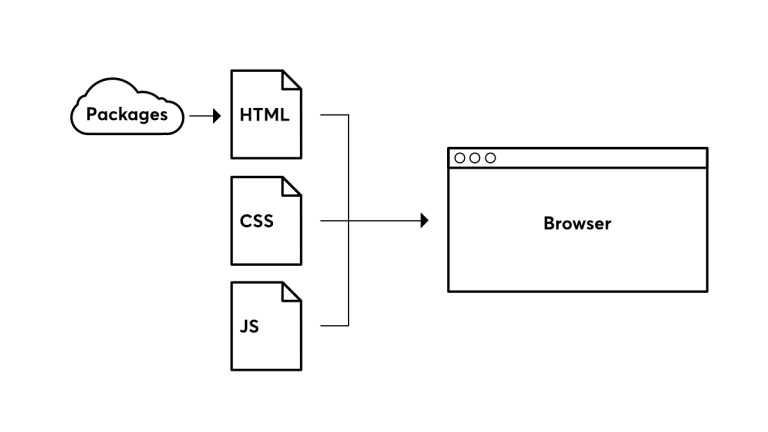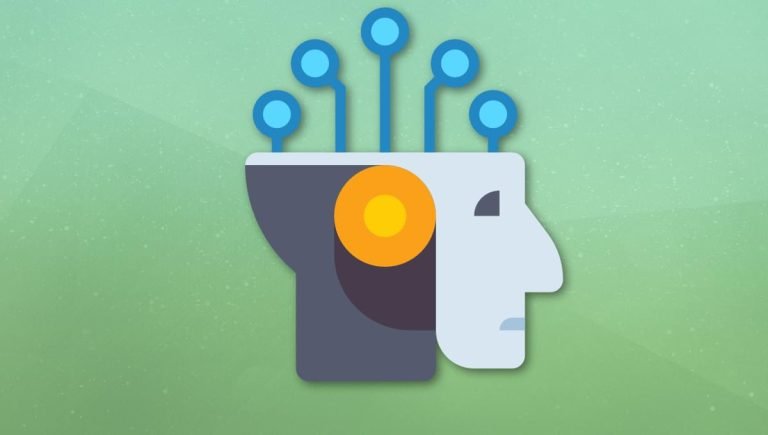
Deep-learning technology allows Toronto-based biotech firm Cyclica to help researchers, companies and governments do drug discovery in record time—including in the COVID-19 crisis.
It has been said that the pandemic has compressed a decade or more of transformation into a matter of months
getty
- With millions of protein combinations in the body to consider, drug development is expensive, time consuming and potentially dangerous.
- AI models can scour the human proteome for new drug components, cutting down development time and cost, and, crucially, limiting harmful side effects.
- Naheed Kurji, co-founder and CEO of Toronto-based biotech firm Cyclica, shares how cloud not only makes this research possible but also enhances collaboration during medical crises like COVID-19.
On January 27, 2020, there were still fewer than 1,000 confirmed reported cases of SARS-COV2 in the world, confined mostly to China, though the first positive tests had also appeared in the U.S. state of Washington and would soon follow in Northern Italy.
On that same day, the leadership team of Cyclica—a data-driven, drug discovery biotech company based in Toronto—met to discuss how it might get involved. Within a week, discussions had commenced with China’s Institute of Materia Medica about sharing Cyclica’s AI-enabled platform, Polypharm DB, platform to begin isolating potential therapies through machine learning.
On March 5, both sides formalized their partnership, and days later, anticipating the coming quest for inoculations and remedies, Cyclica made the platform available pro bono to any researchers working on treatments for what would soon be widely known as COVID-19. In so doing, Cyclica joined thousands of innovative and courageous partnerships over the past two years, aimed at harnessing the heights of human knowledge and ingenuity to tackle a crisis that had brought the world to a standstill.
As with many such ventures, this work turned on a deep understanding of some of the smallest molecules on the planet. It was an understanding that would have been hard to achieve—and even harder to share and collaborate on—were it not for the cloud.
Using AI to break down the proteome
Table of Contents
The newfound understanding of the human proteome has kicked off a flywheel that will only further accelerate the development of new, more effective drugs for years to come.
getty
The cells within the human body produce in the range of 15,000 to 25,000 non-redundant proteins, with millions of variations in between, as demonstrated by researchers mapping what is known as the human proteome. In traditional pharmaceutical development, molecules were studied for potential interactions with the proteins in the body, and then lab experiments and real-world trials would commence to test the molecular interactions that determine a medicine’s effectiveness.
For the past eight years, Cyclica has been working on the cutting edge of a new kind of research that uses computational techniques including AI to analyze the human proteome alongside various molecules and chemical compounds that can make up new drugs. The technology was initially developed to help track and reduce potential side effects from new medicines, and speed their development and time to market.
In the case of COVID-19 applications, researchers at Cyclica, along with those using Polypharm DB, could put the same techniques to work in order to more quickly identify potential therapies for this new coronavirus.
Within six months, Cyclica initiated more than 20 projects with various collaborators including biotech, academic, and research partners. One of these collaborations was able to narrow the database of more than 10,000 molecules to a very likely drug candidate, capmatinib, which could help patients infected with COVID-19 recover.
Yet important as this work has been, some of the greatest innovations may lie ahead.
Related: Watch the webinar, “The need for a cloud-based biomedical research platform”
Transforming drug discovery on the cloud
It has been said that the pandemic has compressed a decade or more of transformation into a matter of months. And so just as mRNA research has likely changed the nature of vaccines and other drugs for years to come, the newfound understanding of the human proteome that the biomed community has been working on has kicked off a flywheel that will only further accelerate the development of new, more effective drugs.
Cloud is the spark for agility and opportunity in most any endeavor—in the field of life sciences and beyond.
Almost none of which would be possible without the cloud. It’s the ability to access such supercomputing power affordably and from anywhere that makes once-unfathomable research of the kind Cyclica is pursuing not only possible but core to the future of medical discovery. That’s not only true at the speed and scale demanded to overcome a global crisis, but also true for everyday discoveries.
These are the seeds of the revolution in personalized medicine, where we stop treating symptoms and begin to treat the whole person. It takes visibility, interoperability, and above all security around our most sensitive and personal medical data. It’s work that can only happen on the cloud, but when done right, it can literally change lives.
Cloud is the spark for agility and opportunity in most any endeavor—in the field of life sciences and beyond.
Decentralizing and democratizing medical innovation
Cyclica was founded on the belief that it could decentralize and democratize medical innovation.
getty
Section authored by Naheed Kurji.
It’s this confluence of technology and pharmacology that has so excited me for going on eight years now, when I first joined Cyclica as a co-founder.
When I was growing up, the unexpected passing of a beloved uncle and grandmother made me at first eager and then unsure of becoming a doctor. It was meeting Jason Mitakidis, Cyclica’s co-founder, during a start-up competition at the University of Toronto Business School, that not only reignited my passion for medicine but showed how entrepreneurship could take medical innovation to new heights.
Cyclica was founded on the belief that it could decentralize and democratize medical innovation. Our goals began simply enough, but the applications have only grown from there.
Let’s begin with a common patient story. A person, let’s call her Abby, is diagnosed with a heart condition, and her doctor prescribes the standard-of-care medication. Abby takes the pill as prescribed, and the medication travels through her body. She begins to feel much better as the medicine improves her condition. A few weeks pass, and Abby begins experiencing severe abdominal pain. It’s determined that the medication is causing liver toxicity, an uncommon, but known, side effect.
Typically, a drug is designed with a specific purpose in mind: to address or cure an underlying medical condition such as an illness or disease. For decades, this has been done by designing the medication to interact with a biological protein target linked to the underlying health issue—in Abby’s situation, a heart condition. Yet as patients, many of us have experiences of drugs often doing more than just the one thing they were designed to do. Certain decongestants can cause either drowsiness or alertness, for example.
This is because a drug, while designed to interact with a protein that is linked to an underlying disease or illness, may interact with dozens to hundreds of unexpected or unknown proteins. This phenomenon is known as polypharmacology. These unintended interactions are called off-targets and can be linked to unanticipated and even harmful side effects.
Such small yet unintended outcomes are not only matters of medical import but financial, as well. If a pharmaceutical company misses a potential biological interaction, it can cause multimillion-dollar drugs to ultimately be pulled or canceled during trials when negative side effects become fully apparent.
Related: New Research: COVID-19 accelerates innovation in healthcare but tech adoption still lags
Expanding protein targets to improve the odds in drug discovery
One potential solution for polypharmacology is the nascent practice of using computational techniques such as AI for drug design. The work starts by using vast capabilities of the latest machine learning to match molecules against all proteins in the human proteome while also ensuring that these molecules have the right drug-like properties.
With so many millions of proteins and molecules at researchers’ disposal, it would be an impossibly time-consuming task without AI. And that AI is itself so large and complex, computationally speaking, that it can only be hosted on the cloud to be effectively accessed anywhere and any time. In fact, it is that very cloud presence that made many COVID-19 partnerships possible
In more conventional settings, this holistic approach to drug discovery has the potential to reduce the side effects that people like Abby could suffer while also ensuring molecules advance through patient clinical trials at a faster cadence. While revolutionary, the matching of molecules against all proteins in the human proteome is an enormous computational risk.
Data-driven drug discovery can be a boon to health equity, as a means to speed up and reduce the cost of medical research and development.
When Cyclica set out to build its analytical platform eight years ago, the company partnered with Google Cloud because of the scale, vast compute power and analytical offerings on Google’s platform.
Through integrations with Google’s Life Sciences Pipeline API and the Google Cloud Healthcare Data Engine, Cyclica was able to massively expand the number of protein targets in drug discovery, thus increasing the odds of discovering new medicines and decreasing the time it takes for them to reach patients. The Healthcare Data Engine was an especially important tool, because of its ability to securely process petabytes of sensitive patient data by leveraging the insights of Google’s BigQuery analytical tools.
Cyclica’s latest integration comes from the Google-affiliated DeepMind. In July 2021, researchers working at the company and a number of European scientific institutions were able to computationally map the millions of protein variations with the same confidence achieved in an experimental setting. (If that weren’t enough, they also achieved the same results for 20 additional organisms that scientists commonly rely on when performing medical research.)
Through Google Cloud, Cyclica was able to immediately adapt its proteome pipeline to work with its newly predicted structures (here). This work enabled Cyclica to double the size of our protein database to close to 18,000, as well as more than 200,000 pockets across that protein database. This represents the industry’s largest known computational-powered human proteome and also enables Cyclica to efficiently address proteins of non-human species like bacteria, viruses, fungi, and rodents.
Taking drug research to new frontiers, faster
Addressing non-human proteins is particularly important in infectious disease, in addition to preclinical research, animal health, and agricultural applications. Building, testing, and operating dozens, even potentially thousands, of proteomes for different species will dramatically increase the need for computation power and throughput. By working with Google Cloud, Cyclica is confident that these computational hurdles can be surmounted.
In addition to its work on COVID-19, Cyclica’s AI-enabled drug discovery platform has been used to advance molecule discovery across a number of different diseases, including, but not limited to cancer, disease of the brain, inflammatory diseases, and respiratory diseases.
These advances are valuable in and of themselves, yet it is the speed and value at which they have been achieved that is arguably the most exciting part of this new technology.
Data-driven drug discovery can be a boon to health equity, as a means to speed up and reduce the cost of medical research and development. And the ability to address rare and so-called orphaned diseases, where the number of patients is so small and far flung, can grow exponentially through cloud solutions. The more data, the more inputs, the more connectivity and cooperation that is possible in the life sciences field, the more breakthroughs we can have.
Put another way, the more lives we can improve and save.
Read this next: The New Standard in Life Sciences Manufacturing







